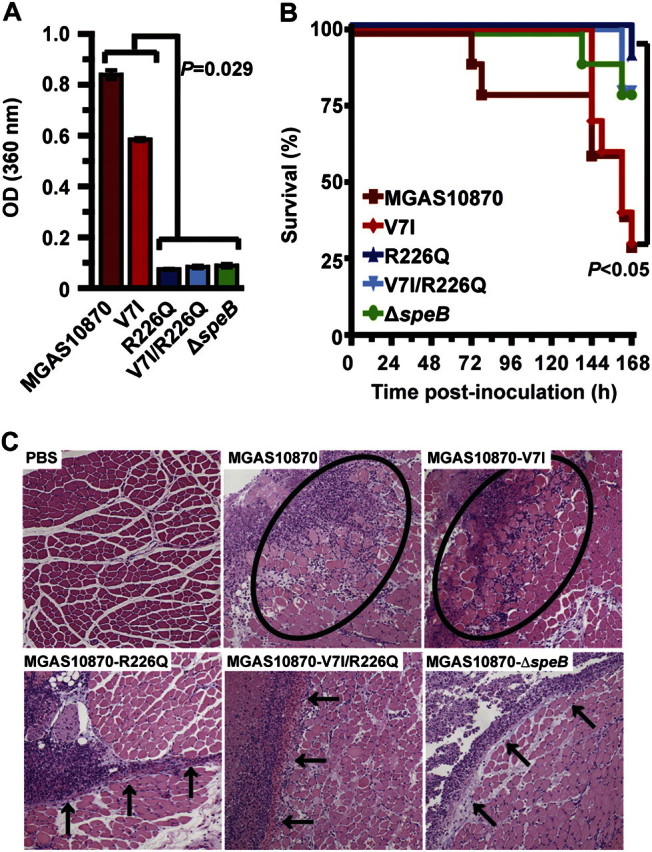Figure 4.

The ropB polymorphisms significantly alter group A streptococci (GAS) strain virulence. Isoallelic strains encoding a ropB sequence that results in the V7I, R226Q, and V7I/R226Q amino acid replacements or lacking the speB gene (designated ΔspeB) were created from representative wild-type strain MGAS10870. A, Level of SpeB secreted protease activity of each isoallelic strain was confirmed using a quantitative chromogenic azocasein hydrolysis assay. The mean ± standard error of the mean (SEM) from 4 replicate measurements is shown (Mann-Whitney test, P = .029 for either strain MGAS10870 or V7I compared with either strain R226Q, V7I/R226Q or ΔspeB). B, Virulence of these isoallelic strains was compared using a mouse model of necrotizing fasciitis. Results are graphically represented as a Kaplan-Meier survival curve (log-rank test, P < .05 for either strain MGAS10870 or V7I compared with either strain R226Q, V7I/R226Q or ΔspeB; difference not significant for strain MGAS10870 compared with strain V7I). C, Histologic analysis of infected limb tissue (representative micrographs are shown, hematoxylin and eosin stain, 40× original magnification). Wild-type strain MGAS10870 caused severe muscle necrosis (circled region), whereas the isoallelic R226Q, V7I/R226Q and SpeB-deficient strains caused markedly smaller and less destructive lesions that were restricted to the major fascial planes (black arrows). The isoallelic strain with a V7I amino acid replacement had an intermediate virulence phenotype (note the 72 h difference in the time to the first near-mortality event and the slightly less severe tissue destruction caused by strain V7I compared with wild-type strain MGAS10870).
